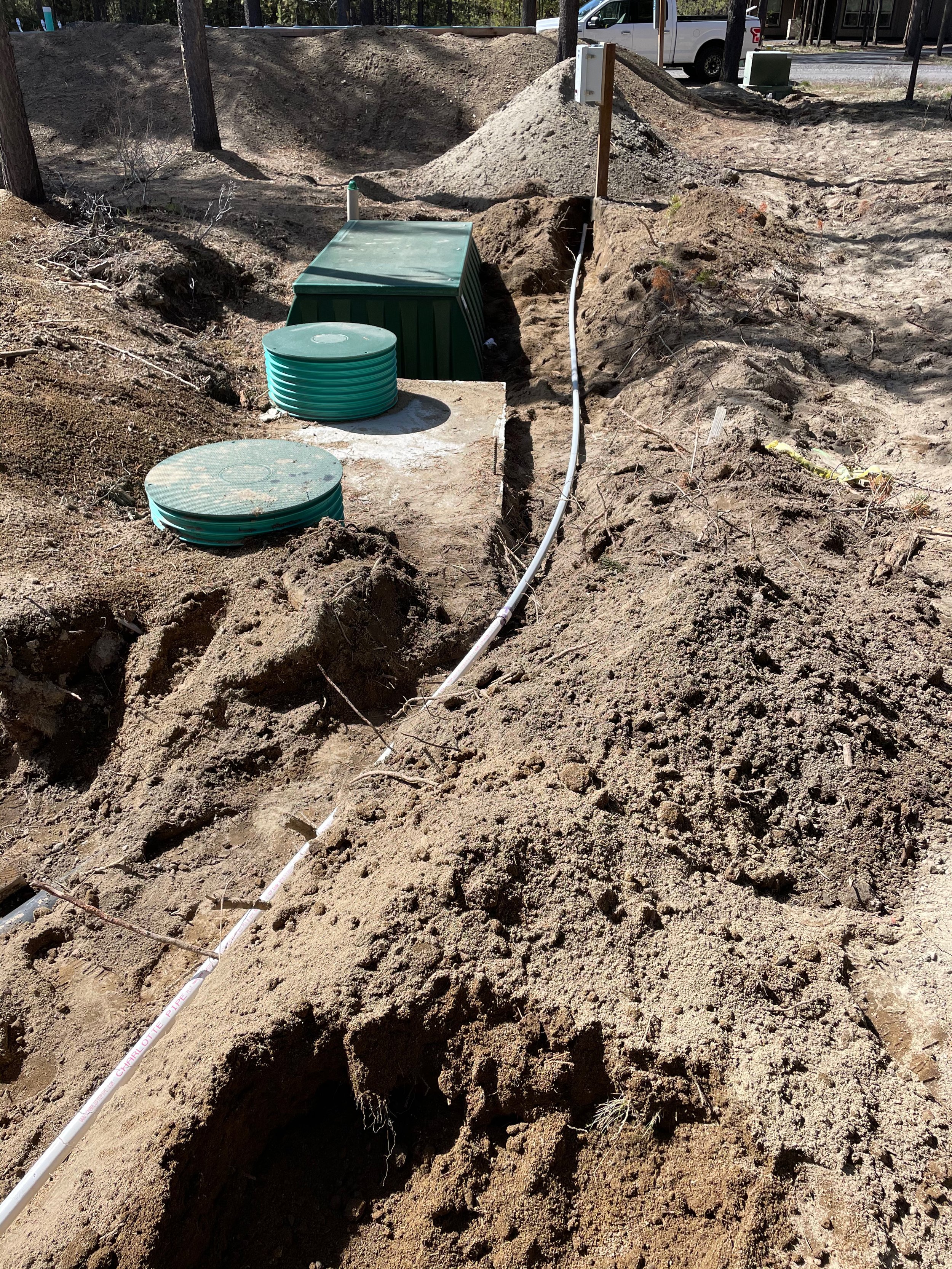The Essential Guide to Septic Systems in Central Oregon
Septic systems are a crucial component of rural and suburban homes in Central Oregon that are not connected to municipal sewer lines, offering an efficient way to treat and dispose of household wastewater on-site. With the unique geological and environmental conditions characterizing Central Oregon, selecting, installing, and maintaining the right septic system is key to ensuring the longevity of your property's waste management solutions and the health of the surrounding ecosystem.
What Is a Septic System?
At its core, a septic system is an underground wastewater treatment structure that uses natural processes to treat and dispose of the effluent from your home. It typically consists of two main components: a septic tank and a drainfield. The septic tank is a watertight container usually made of concrete, fiberglass, or polyethylene that holds the wastewater long enough for solids to settle down to the bottom, forming sludge, while oil and grease float to the top as scum. The effluent, or liquid waste, then flows into the drainfield, also known as a leach field or soil absorption field, where it is further treated by the soil. Compared to centralized sewer systems, septic systems are a more cost-effective and environmentally friendly solution for wastewater treatment in areas where municipal sewer lines are not available.
How Septic Systems Work
Understanding the process through which septic systems treat and dispose of wastewater is essential for any homeowner looking to install or maintain their system effectively. Here’s a step-by-step overview of how these systems function:
Waste Separation in the Septic Tank
Wastewater from your home flows into the septic tank through a sewer pipe. Here, the wastewater is held, allowing heavy solids to settle at the bottom, where bacteria break them down into sludge. Meanwhile, lighter substances like oils and grease rise to the top to form a layer of scum. The design of the tank ensures that the solid material is contained, preventing it from entering the drainfield.
Effluent Treatment in the Drain Field
The partially treated water, or effluent, then moves from the tank to the drainfield, a series of pipes laid in gravel-filled trenches in the soil. As the effluent percolates through the soil, further treatment occurs through microbial action, filtering, and neutralizing bacteria, viruses, and nutrients. This natural filtration process cleans the water before it eventually rejoins groundwater sources.
Soil Absorption and Filtration
The final step occurs in the soil beneath the drainfield, where the filtered water is absorbed into the ground. The soil acts as a natural filter, removing harmful bacteria, viruses, and nutrients from the effluent. This process ensures that the water returning to the groundwater system is clean and non-polluting.
Understanding the basic functioning of septic systems lays the groundwork for exploring the various types available to Central Oregon homeowners, each suited to different environmental conditions and regulatory requirements.
Types of Septic Systems Available in Central Oregon
The right septic system for your property depends on several factors, including soil type, property size, and environmental regulations. Central Oregon's diverse geography, from the high desert landscape of Bend and Redmond to the forested areas around La Pine, means that one size does not fit all when it comes to septic solutions. Let's look at three primary types of septic systems utilized in the region.
Conventional Septic Systems
Conventional septic systems are the most common type used in residential settings. This system includes a septic tank for waste separation and a drainfield for the natural treatment and dispersal of the treated effluent into the ground. They are suited for properties with sufficient space for a drainfield and where soil conditions are favorable for natural filtration.
Advantages: Cost-effective and simple to install and maintain.
Considerations: Requires relatively large, undisturbed areas and specific soil conditions to function effectively.
Alternative Treatment Technology (ATT) Systems
ATT systems represent a significant advancement in septic system technology, providing a higher level of wastewater treatment by supplementing the traditional septic tank with an additional treatment unit. This system is often necessary when soil conditions are poor, space is limited, or enhanced treatment is required to protect groundwater or surface water.
Components: A septic tank, an ATT unit (incorporating aerobic treatment processes), and an absorption facility.
Conditions for Use: ATT systems are required under certain conditions, such as inadequate soil for a conventional system, limited ground separation to water tables, or the need for nitrogen removal.
Approval and Maintenance: The Oregon Department of Environmental Quality (DEQ) approves ATT systems, and homeowners must maintain a contract with a DEQ-certified maintenance provider. Annual reports and fees are part of the ongoing maintenance requirements to ensure the system functions correctly.
Sand Filter ATT Systems
Sand filter systems are a specific type of ATT that uses a sand filter for additional effluent treatment. This system is typically used when the soil is not suitable for a conventional drainfield or when additional treatment is required before the effluent reaches the drainfield.
How It Works: Effluent from the septic tank flows into a sand filter box, where it is further treated before being discharged to a conventional drainfield or other absorption facility.
Advantages: Provides a higher level of effluent treatment, making it suitable for environmentally sensitive areas or properties with challenging soil conditions.
Maintenance: Like other ATT systems, sand filter systems require regular maintenance and monitoring to ensure effective operation.
Installation and Maintenance of ATT Systems in Central Oregon
Installing an ATT system involves careful planning and adherence to both state and local regulations. Before installation, homeowners must obtain approval from the DEQ, including selecting an approved ATT model. A comprehensive maintenance agreement with a certified provider is crucial for system longevity and compliance.
Special Considerations for ATT System Owners
Owning an ATT system comes with specific responsibilities: Read Deschutes county guide to ATT Systems here.
Performance Standards: Check the installation permit for required NSF/ANSI treatment standards.
Operational Expenses: Be prepared for the costs associated with the complex equipment and regular maintenance needs of ATT systems.
Certified Professionals: Only DEQ-certified installers and maintenance providers should be hired, ensuring system reliability and regulatory compliance.
Choosing the right septic system for your home in Central Oregon is a significant decision that affects not only the environmental health of your property but also the broader ecosystem. Whether opting for a conventional system or the advanced treatment offered by ATT systems, understanding the specific requirements and maintenance commitments of your septic system ensures a sustainable solution for your wastewater management needs.
Maintaining Your Septic System
Regular maintenance is essential for the longevity and efficiency of your septic system, regardless of its type. Proper care not only prevents costly repairs and replacements but also protects groundwater quality and the environment. Here are some tips for maintaining your septic system:
Regular Inspections: Have your system inspected by a certified professional at least once every three years. Tanks should be pumped when necessary, typically every 3 to 5 years, depending on the size of your tank and household usage.
Efficient Water Use: Reduce water usage to avoid overloading the system. Fix leaks, use water-saving fixtures, and spread out laundry and dishwasher use.
Proper Waste Disposal: Never flush anything other than human waste and toilet paper. Avoid disposing of household chemicals, grease, and non-biodegradable materials in your sinks or toilets.
Landscaping Considerations: Keep trees and large shrubs away from the drainfield area to prevent root intrusion. Grass is the best cover to prevent soil erosion.
The Importance of Professional Septic Services
Choosing the right professional for the installation, maintenance, and repair of your septic system is paramount. Professional septic services ensure that your system is installed correctly, functioning efficiently, and compliant with local regulations. Here’s how to ensure you’re hiring the right experts:
Certifications and Experience: Look for providers with specific certifications, such as DEQ certification in Oregon, and ask about their experience with homes in Central Oregon.
Local Knowledge: Professionals familiar with the specific environmental conditions and regulations in Central Oregon can provide tailored advice and solutions.
Navigating Septic System Regulations in Central Oregon
Central Oregon homeowners must navigate a series of local and state regulations when installing and maintaining their septic systems. Understanding these regulations is crucial to ensure compliance and avoid penalties:
Permits: Most installations, upgrades, or repairs require a permit from the local health department or environmental agency. The process includes soil testing, site evaluation, and system design. Read our full permit guide fro Central Oregon here.
Oregon Department of Environmental Quality (DEQ): The DEQ oversees septic system regulations in Oregon, including the approval of ATT systems. Familiarize yourself with their guidelines and approved system list.
Local County Regulations: Specific requirements can vary by county, so check with your local health department for any additional guidelines.
Cost Considerations and Financial Assistance
The cost of installing or upgrading a septic system in Central Oregon can vary widely depending on the system type, property size, and soil conditions. While conventional systems are generally less expensive, ATT systems offer advanced treatment options at a higher initial investment. However, several financial assistance options are available, including grants, loans, and county-specific programs, to help homeowners manage these costs.
Septic System FAQs Tailored to Central Oregon Residents
1. How often should I pump my septic tank in Central Oregon?
The frequency of pumping depends on the size of your tank and household water usage. On average, it's recommended to pump your tank every 3 to 5 years. However, annual inspections by a professional can help determine the optimal pumping schedule for your specific system.
2. Can I install a septic system in winter in Central Oregon?
Winter installations can be challenging due to the frozen ground and snow. It's best to plan installations for warmer months. However, if necessary, special arrangements can be made with a professional service, keeping in mind that it may increase the project's cost.
3. Are there any restrictions on using garbage disposals with a septic system?
While garbage disposals can be used with septic systems, they significantly increase the amount of solids in the tank, necessitating more frequent pumping. Consider composting kitchen waste to reduce the load on your system.
4. What signs indicate a failing septic system?
Common signs include sewage backups in the house, slow draining fixtures, gurgling sounds in the plumbing, bad odors around the tank or drainfield, and unusually lush or soggy ground over the drainfield area. If you notice any of these signs, contact a professional immediately.
5. How can I find a reputable septic service provider in Central Oregon?
Look for providers with specific certifications, such as DEQ certification, and ask for references or check online reviews. Local knowledge and experience with the unique conditions of Central Oregon are crucial for effective septic system service. Learn more about BlackSage Septic Services.
Conclusion
For homeowners in Bend, La Pine, Redmond, and the surrounding areas of Central Oregon, understanding and properly maintaining a septic system is crucial for the sustainability of their homes and the protection of the region's natural beauty. By choosing the appropriate system, adhering to regular maintenance schedules, and complying with local regulations, residents can ensure their septic systems function effectively and environmentally responsibly for years to come. Always consult with professional septic services to address specific needs and challenges, ensuring your home remains a safe and enjoyable place for your family.





